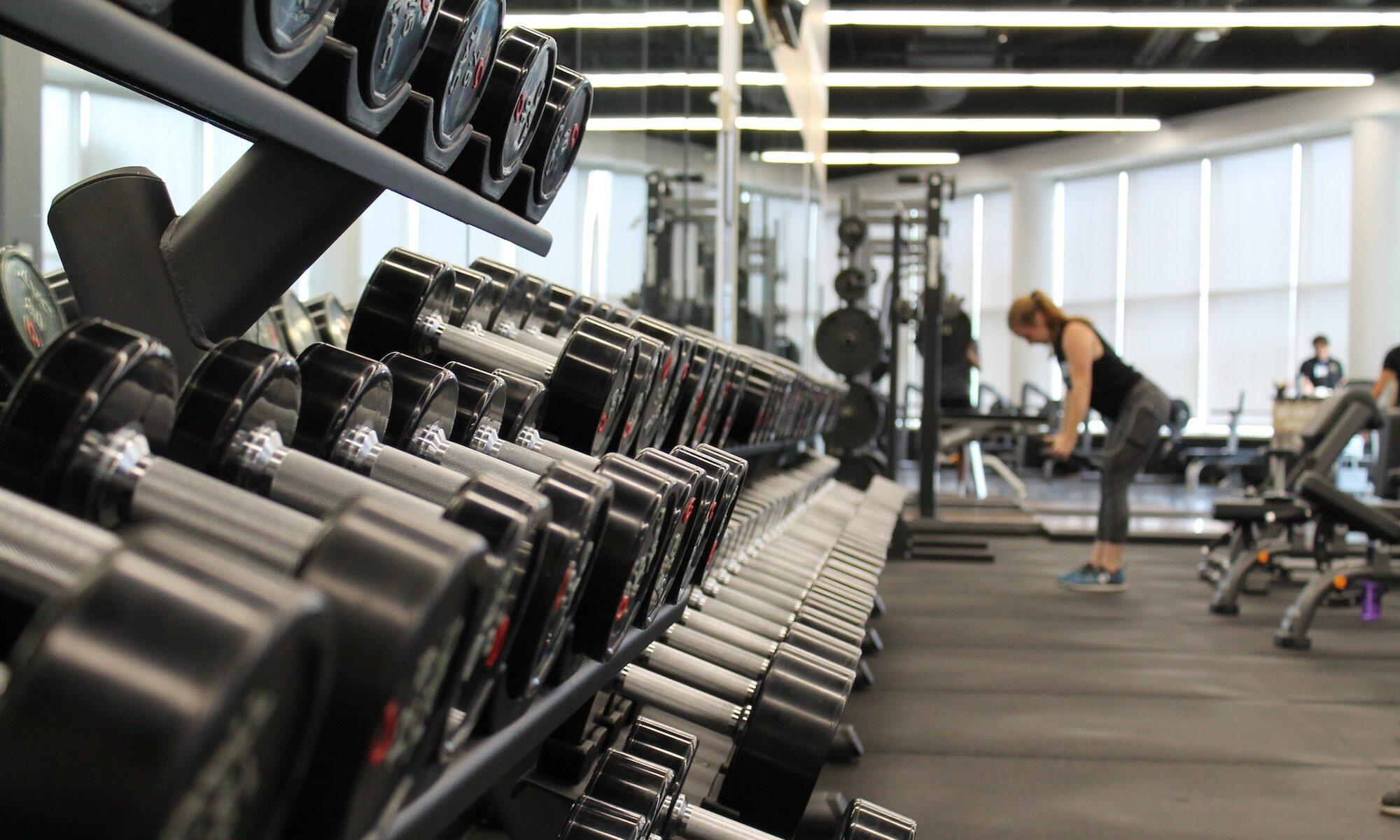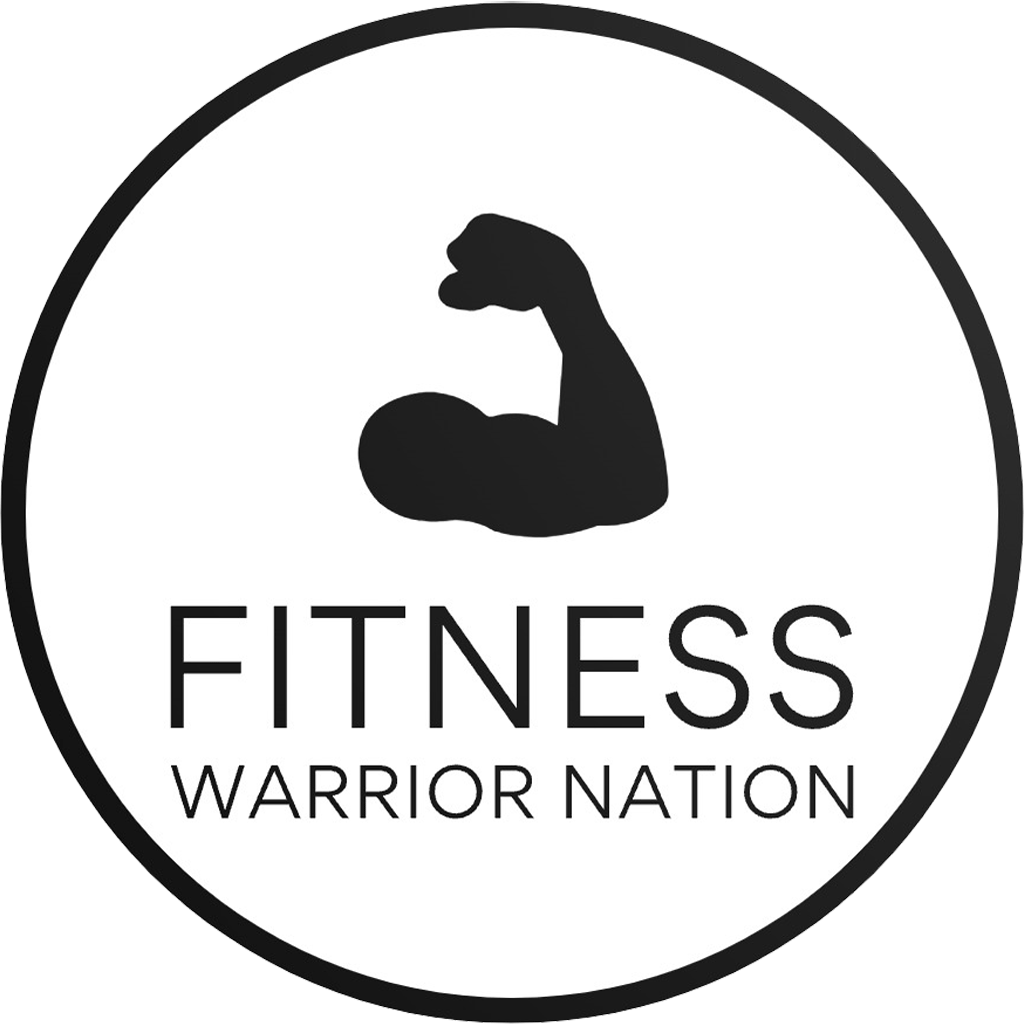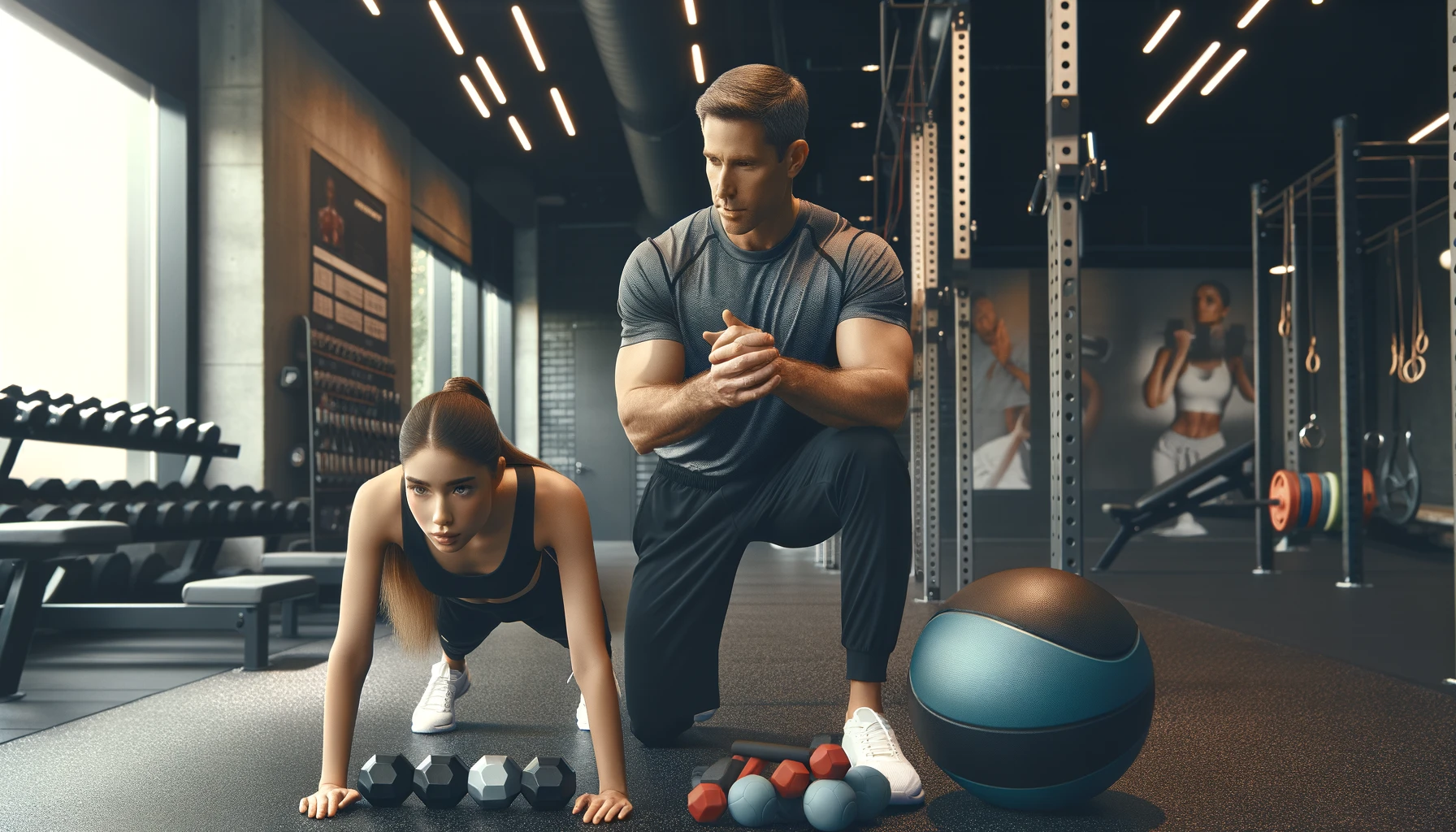Achieve your dream physique with targeted workouts! Our expertly crafted plans help you build muscle, lose weight, or tone up. Start your fitness journey today and get the personalized guidance and support you need to reach your goals.
Looking to achieve your dream physique? With targeted workouts, you can finally reach your fitness goals and transform your body into what you’ve always desired. Whether you want to build muscle, lose weight, or tone up, our expertly crafted workout plans are designed to help you get results and make your journey to a healthier you enjoyable. Say goodbye to generic exercises and hello to a personalized fitness routine that will keep you motivated and on track. Get the guidance and support you need to make your dream physique a reality. Start your fitness journey today!
Understanding Your Dream Physique
When it comes to achieving your dream physique, it’s important to have a clear understanding of your goals, body type, and current fitness level. By determining these factors, you can create a targeted workout plan that will help you effectively reach your desired results.
Determining your goals
Before you start any fitness journey, it’s crucial to have a clear picture of what you want to achieve. Set specific goals for yourself that are realistic and attainable. Do you want to build muscle, lose weight, improve endurance, or enhance overall fitness? Having a clear vision of your goals will allow you to tailor your workouts accordingly and stay motivated throughout the process.
Identifying your body type
Understanding your body type can greatly influence the way you approach your workouts. There are three main body types: ectomorph, mesomorph, and endomorph. Ectomorphs are naturally lean and may struggle to gain muscle mass, while mesomorphs have a more muscular build and tend to respond well to strength training. Endomorphs typically have a higher body fat percentage and may need to focus more on losing weight before building muscle. Identifying your body type will help you choose the right exercises and training strategies to achieve your dream physique.
Understanding your current fitness level
Assessing your current fitness level is essential to develop a workout plan that suits your needs. Consider factors such as your cardiovascular endurance, strength, and flexibility. This will help you gauge where you currently stand and set realistic expectations for your progress. You can also consult with a fitness professional or use fitness assessments to gain a better understanding of your baseline fitness level.
Creating a Targeted Workout Plan
Once you have a clear understanding of your goals, body type, and current fitness level, it’s time to create a targeted workout plan that will help you achieve your dream physique. This involves setting specific fitness targets, choosing appropriate exercises, and defining the frequency and duration of your workouts.
Setting specific fitness targets
To make your workout plan effective, it’s important to set specific targets. Instead of aiming for general goals like “getting fit” or “burning fat,” set specific targets such as running a 5K in under 25 minutes or increasing your bench press weight by 10 pounds within a month. These specific targets provide you with a clear direction and help you stay motivated as you track your progress.
Choosing appropriate exercises
Selecting the right exercises is crucial for targeting specific muscle groups and achieving your desired physique. Consider incorporating a combination of compound exercises, which engage multiple muscle groups, and isolation exercises that focus on specific muscles. For example, squats and deadlifts are compound exercises that target the lower body, while bicep curls and tricep extensions isolate the arm muscles. Choose exercises that align with your goals and ensure proper form to maximize results and avoid injury.
Defining the frequency and duration of workouts
Another important aspect of a targeted workout plan is determining the frequency and duration of your workouts. This depends on various factors such as your fitness level, schedule, and recovery ability. Aim for at least 150 minutes of moderate-intensity aerobic activity or 75 minutes of vigorous-intensity aerobic activity per week, as recommended by the American Heart Association. Additionally, allocate time for resistance training to build strength and muscle. Consider splitting your workouts into different muscle groups and allowing for rest days to promote recovery.
Customizing Your Workouts for Different Muscle Groups
To achieve a well-rounded physique, it’s important to target different muscle groups to ensure balanced development. By focusing on the upper body, lower body, and core, you can create a workout routine that addresses all areas of your physique.
Targeting the upper body
To strengthen and tone your upper body, incorporate exercises that target the chest, back, shoulders, and arms. Push-ups, dumbbell presses, rows, shoulder presses, and bicep curls are excellent exercises to include in your routine. Vary the intensity, rep range, and resistance to continually challenge your muscles and stimulate growth.
Focusing on the lower body
Building a strong lower body not only enhances aesthetics but also improves overall functional fitness. Incorporate exercises such as squats, lunges, deadlifts, calf raises, and hamstring curls to target the quadriceps, hamstrings, glutes, and calves. Adjust the weight and rep range based on your fitness level and progressively increase the intensity over time.
Strengthening the core
A strong core provides stability and supports proper posture. Include exercises that target the abdominals, obliques, and lower back to strengthen and define your core. Planks, Russian twists, leg raises, and bicycle crunches are effective exercises that engage the core muscles. Incorporate these exercises into your routine and focus on maintaining proper form throughout to maximize results.
Incorporating Cardiovascular Exercises
In addition to strength training, cardiovascular exercises are essential for maintaining overall fitness, burning calories, and improving cardiovascular health.
Understanding the benefits of cardio
Cardiovascular exercise, also known as aerobic exercise, offers numerous benefits for your overall well-being. It helps strengthen your heart and lungs, improves endurance, increases calorie expenditure, reduces the risk of chronic diseases, and enhances mood and mental well-being. Regular cardio workouts can also assist with weight loss goals and contribute to a leaner physique.
Choosing the right type of cardio
The choice of cardio exercises depends on personal preference, fitness level, and accessibility. Options include running, swimming, cycling, brisk walking, dancing, and various group fitness classes. Choose activities that you enjoy, as this will help you stay motivated and consistent. Consider incorporating a mix of high-intensity interval training (HIIT), steady-state cardio, and low-impact options to keep your workouts diverse and engaging.
Developing a cardio routine
To incorporate cardiovascular exercises into your routine, aim for at least 150 minutes of moderate-intensity aerobic activity or 75 minutes of vigorous-intensity aerobic activity per week. If time is limited, you can break it down into shorter sessions throughout the week. Gradually increase the intensity and duration of your workouts to challenge your cardiovascular system and continually improve your fitness level.
Utilizing Weight Training Techniques
Weight training is a crucial component of any comprehensive workout plan, regardless of your fitness goals. It not only helps build lean muscle mass but also boosts metabolism, enhances strength, and improves overall body composition.
Understanding the benefits of weight training
Weight training offers a multitude of benefits for your physique and overall health. It helps increase muscle strength and size, which contributes to a toned and defined appearance. Additionally, weight training improves bone density, reduces the risk of injury, enhances joint stability, and elevates your metabolism, leading to increased calorie burn even at rest. Incorporating weight training exercises into your routine will help you achieve a well-rounded and aesthetically pleasing physique.
Selecting the appropriate weight training exercises
When it comes to weight training, there are endless exercise options to choose from. Incorporate compound exercises such as squats, deadlifts, bench presses, rows, and overhead presses to target multiple muscle groups simultaneously. These exercises engage the body as a whole and are highly effective for muscle growth and strength development. Additionally, include isolation exercises to target specific muscles for greater muscle definition. Remember to select weights that challenge you but still allow for proper form and technique.
Creating a progressive overload
Progressive overload is a fundamental principle in weight training that involves progressively increasing the demands placed on your muscles to promote growth and adaptation. To implement progressive overload, gradually increase the weight, repetitions, or sets during your workouts. This progressive increase in intensity forces your muscles to adapt and grow stronger over time. Keep track of your progress and aim to challenge yourself by introducing new exercises, increasing weights, or modifying repetitions and sets regularly.
Implementing High-Intensity Interval Training (HIIT)
High-Intensity Interval Training (HIIT) has gained popularity due to its efficiency and effectiveness in improving cardiovascular fitness, burning calories, and boosting metabolism.
Exploring the advantages of HIIT
HIIT involves short bursts of high-intensity exercise followed by active recovery periods. This type of training increases your heart rate, challenges your cardiovascular system, and burns a significant amount of calories in a shorter period compared to steady-state cardio. HIIT also stimulates the production of human growth hormone (HGH), which aids in muscle growth and fat burning.
Designing an effective HIIT workout
To design an effective HIIT workout, choose exercises that engage major muscle groups and can be performed with maximum effort for short intervals. For example, include exercises such as burpees, mountain climbers, jump squats, and sprints. Perform each exercise for 20-30 seconds at high intensity, followed by 10-20 seconds of active rest or lower-intensity exercise. Repeat this cycle for 10-20 minutes, gradually increasing the duration as your fitness level improves.
Incorporating HIIT into your routine
HIIT can be incorporated into your routine 2-3 times a week, alternating with other forms of cardio and strength training. Start with shorter sessions and gradually increase the duration and intensity as you build your stamina. Remember to warm up properly before each HIIT session to prevent injuries and cool down with stretching afterward to aid in recovery.
Incorporating Flexibility and Mobility Exercises
Flexibility and mobility exercises play a vital role in injury prevention, improving range of motion, and optimizing overall physical performance.
Understanding the importance of flexibility and mobility
Flexibility refers to the ability of your muscles and joints to move through a full range of motion, while mobility refers to the ability to move efficiently and effectively. Incorporating flexibility and mobility exercises into your routine can help improve posture, prevent muscle imbalances, reduce the risk of injury, and enhance functional movement patterns.
Choosing appropriate flexibility exercises
When selecting flexibility exercises, focus on stretching major muscle groups such as the hamstrings, quadriceps, hip flexors, chest, and shoulders. Static stretches, where you hold a stretch for 30 seconds or longer, can help improve flexibility. Dynamic stretches, which involve moving a joint through its full range of motion, are beneficial for warming up before a workout. Aim to stretch regularly, ideally after a workout when your muscles are warm and more pliable.
Incorporating mobility exercises into your routine
Mobility exercises focus on specific joints and movement patterns, helping to improve joint stability, coordination, and overall movement quality. Include exercises such as hip rotations, shoulder circles, spinal twists, and ankle mobility drills in your routine. These exercises can be performed both before and after workouts to enhance joint mobility and prepare your body for movement.
Tracking Your Progress and Making Adjustments
Monitoring your progress is crucial for staying on track and making necessary adjustments to your workout plan. By assessing your performance and results, you can identify areas that need improvement and make changes accordingly.
Monitoring your performance and results
Track your workouts and measure your progress regularly to have a clear idea of your improvements. Keep a workout journal, use a fitness app, or utilize wearable fitness trackers to record your workouts, sets, reps, and weights. Additionally, periodically assess your body composition, strength gains, endurance progress, and other specific metrics related to your goals. This data will help you gauge your progress and make informed decisions about your workout routine.
Making necessary adjustments to your workouts
As you progress in your fitness journey, it’s important to make adjustments to your workouts to continue challenging your body. Gradually increase the intensity, volume, or difficulty of your exercises as you become stronger and more accustomed to your routine. Incorporate new exercises, modify rep ranges or implement different training techniques to ensure your muscles continue to adapt and grow. Consult with a fitness professional if you need guidance on how to modify your workouts effectively.
Seeking professional guidance if needed
If you’re unsure about your workout plan or feel stuck in your progress, don’t hesitate to seek professional guidance. A certified personal trainer or fitness coach can help assess your goals, create a customized plan, and provide valuable expertise to optimize your workouts. They can also guide you in developing proper form and technique, preventing injuries, and ensuring maximum results.
Maintaining a Balanced Diet and Nutrition Plan
Achieving your dream physique isn’t solely dependent on exercise. Proper nutrition plays a fundamental role in fueling your workouts, supplying essential nutrients, and supporting your body’s growth and repair processes.
Understanding the role of nutrition in achieving your dream physique
Nutrition is a key component in achieving your dream physique. It provides the necessary energy for workouts, improves muscle recovery, aids in fat loss, and supports overall health and well-being. To optimize your nutrition, focus on consuming a balanced diet that includes a variety of whole foods, such as lean proteins, colorful fruits and vegetables, whole grains, and healthy fats. Avoid excessive consumption of processed foods, sugary beverages, and unhealthy fats, as they can hinder your progress and negatively impact your health.
Balancing macronutrients and caloric intake
Macronutrients, including proteins, carbohydrates, and fats, are essential for providing energy, building and repairing tissues, regulating hormones, and supporting various bodily functions. Balancing your macronutrient intake is crucial for achieving your dream physique. Aim to consume a sufficient amount of protein to support muscle growth and repair, complex carbohydrates for sustained energy, and healthy fats for optimal health. Additionally, be mindful of your caloric intake, ensuring it aligns with your goals. Consider consulting with a registered dietitian or nutritionist to develop a personalized nutrition plan that suits your needs.
Sourcing proper nutrition information
With an abundance of nutrition information available, it’s important to rely on credible sources to educate yourself about proper nutrition. Seek information from reputable sources such as registered dietitians, nutritionists, scientific journals, and government health resources. Avoid falling into the trap of fad diets or following unproven strategies. Remember, nutrition is highly individualized, and what works for someone else may not work for you. It’s important to listen to your body, make informed choices, and adopt sustainable eating habits for long-term success.
Staying Consistent and Motivated
Consistency and motivation are crucial for achieving and maintaining your dream physique. By setting achievable goals, creating a schedule, and finding support and rewards, you can stay on track and enjoy the journey.
Setting achievable short-term goals
While having long-term goals is important, setting achievable short-term goals can provide immediate motivation and a sense of accomplishment. Break down your long-term goals into smaller, actionable targets that you can achieve within a shorter time frame. For example, if your long-term goal is to lose 20 pounds, set a short-term goal of losing 1-2 pounds per week. Celebrate these small victories to stay motivated and focused on your overall progress.
Creating an exercise schedule and sticking to it
Consistency is key when it comes to achieving your dream physique. Create an exercise schedule that fits into your lifestyle and commit to it. Treat your workouts as non-negotiable appointments with yourself, just like any other important commitment. Set realistic expectations and choose a workout schedule that you can realistically adhere to. By prioritizing exercise and sticking to your schedule, you’ll make steady progress towards your goals.
Finding motivation through support and rewards
Finding support and motivation from others can greatly enhance your fitness journey. Surround yourself with like-minded individuals who share your goals or join fitness communities, online forums, or group classes. Sharing your successes, challenges, and experiences with others can provide encouragement, accountability, and valuable insights. Additionally, reward yourself for achieving milestones or sticking to your routine. Treat yourself to something you enjoy, such as a massage, new workout gear, or a relaxing day off. These rewards can fuel your motivation and serve as a reminder of your hard work and dedication.
In conclusion, understanding your dream physique, creating a targeted workout plan, incorporating cardiovascular exercises, utilizing weight training techniques, implementing high-intensity interval training, incorporating flexibility and mobility exercises, tracking your progress, maintaining a balanced diet, and staying consistent and motivated are all crucial elements in achieving your dream physique. By following these guidelines and adapting them to your individual needs, you can embark on a successful fitness journey and transform your body and overall well-being. Remember, consistency, patience, and discipline are key, so stay focused, enjoy the process, and celebrate every milestone along the way. You’ve got this!


